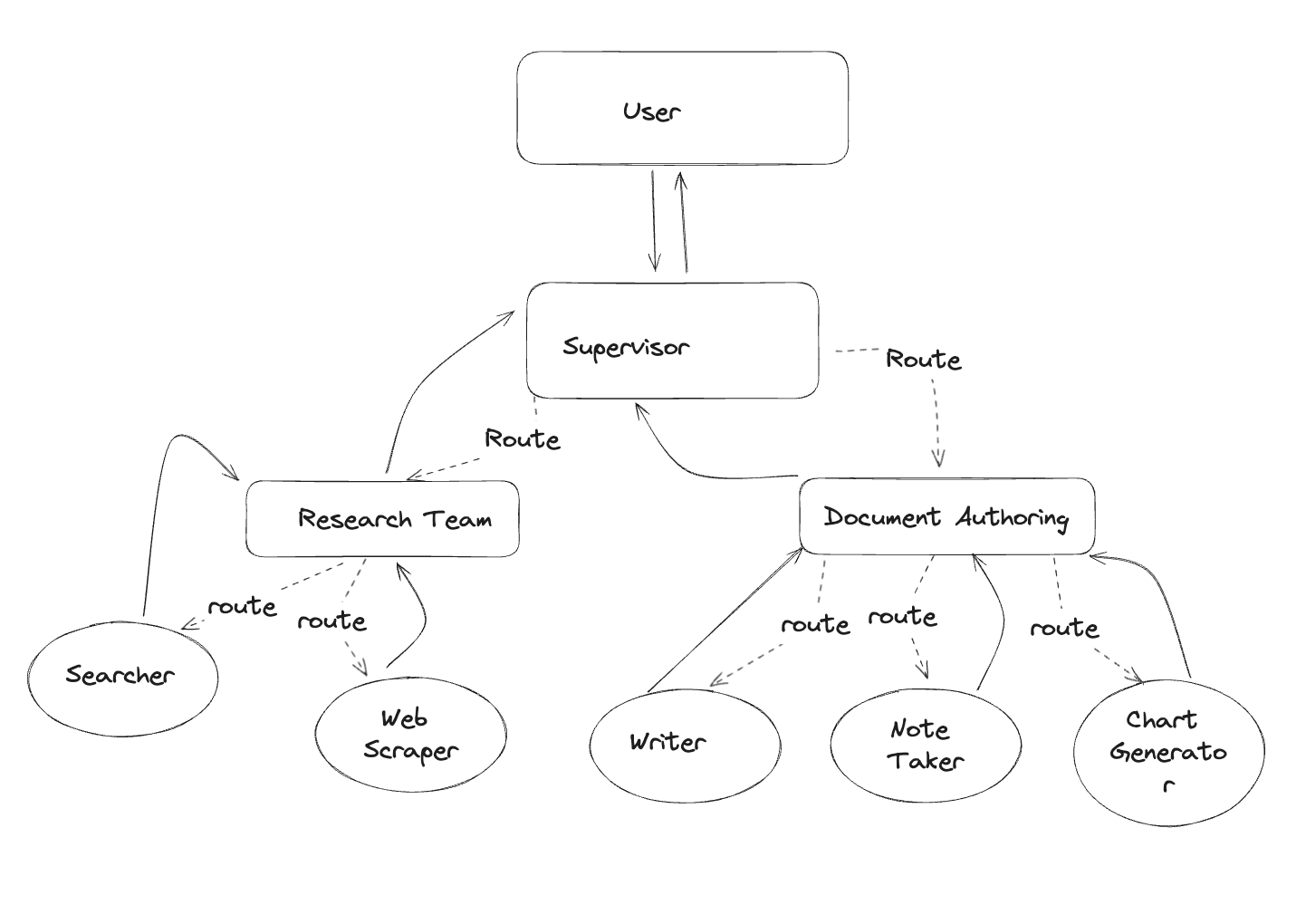Agent Systems¶
Just like for people, when we can interact our interactions become a part of a system. When an agent (or model) engages in an interaction with another agent, the result is an agent system. The systems can be ordered or disordered, and interact with varying degrees of regulation as imposed by the environment, which includes other agents. To help steer the systems a person may be essential, though fully autonomous systems are of high intriguing for practical and theoretical reasons.
Agent systems are integral components of the next stage of AI
Individual agents are not individually ideal to perform the variety of tasks that are given to them. Prompt-engineering, memories and their derivative personas can enable different quality of output. Working together, different agents have the potential to create more successful outcomes.
The challenge is how?
This is an important question and bridges the gaps between complexity organization and process design.
Frameworks¶
Agentic Systems require communication between AI agents. To manage complexity and increase success potential, frameworks provide structured patterns of interaction. These frameworks act as a higher-level cognitive architecture that can be built up in various ways to achieve end goals effectively.
Core Frameworks¶
LangGraph - Workflow Orchestration
LangGraph provides a system for orchestrating multi-agent workflows:
- Simple and hierarchical agent interactions
- Custom-built interaction patterns
- Flexible workflow management

AutoGen - Multi-Agent Development
AutoGen enables sophisticated multi-agent applications: - Flexible agent communication patterns - Built-in conversation management - Extensible agent capabilities Paper
Theoretical Classifications¶
Communication Patterns¶
Binary Systems (Asymmetric)
- One-way communication flow
- Clear hierarchy between agents
- Example: An agent using another agent's capabilities as a tool
Multi-Agent Systems (Symmetric)
- Bidirectional communication
- Peer-to-peer interactions
- Collaborative decision-making
Organizational Structures¶
Hierarchical Systems
- Clear chain of command
- Specialized roles at different levels
- Structured information flow
Mesh Networks
- Direct peer-to-peer communication
- Flexible role assignment
- Emergent behavior patterns
Hybrid Architectures
- Combination of hierarchical and mesh patterns
- Context-dependent organization
- Adaptive role assignment
System Design Principles¶
1. Communication Protocol¶
- Standardized message formats
- Clear interaction patterns
- Error handling mechanisms
2. Role Definition¶
- Clear agent responsibilities
- Skill and capability mapping
- Dynamic role assignment
3. State Management¶
- Shared context maintenance
- Memory synchronization
- Conflict resolution
4. Safety and Control¶
- Access control mechanisms
- Action validation
- System boundaries
For practical implementations and case studies, see Agent System Examples.
Tools and Infrastructure¶
Development Tools¶
A flexible scheduler and orchestrator for deploying and managing agent systems at scale.
Enables secure, multi-tenant, minimal-overhead execution of agent workloads.